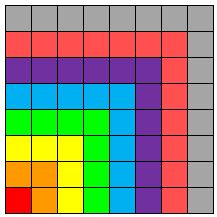2016 is sitting slouched in its chair like a tired and
stroppy Yr 11 student. “I know that
Brexit and Trump were my fault, but you can’t blame me for David Bowie or
Prince. Or George Michael.” And then 2016 shouts: “Everyone’s got it in
for me.”
For example:
For example:
Dear 2016,— Darth Vader (@DepressedDarth) December 23, 2016
It's been a tough year, please don't take Carrie Fisher.
Sincerely,
Everybody.
Is it fair to have a go at 2016?
The people whose deaths have made it into the national or
international media all have one thing in common: they are famous. It does feel as if there were more deaths of
famous people during 2016 than in previous years, so what is going on? Well maybe there are just more famous people
who are getting old round about now.
Some assumptions:
- We have noted the deaths of celebrities
- The median age nowadays is about 75
- People become famous in their mid-twenties
Using these assumptions, many of the celebrities will have
come to prominence in the mid-1960s. Let’s compare 1966 with 1956.
How can we find how many famous people there were in each
year? One proxy we can use is the number of movies that were released.
According to the Internet Movie Database, there were 10,460 movies released during 1956. In 1966 there were 18,053.
According to the Internet Movie Database, there were 10,460 movies released during 1956. In 1966 there were 18,053.
This is a massive increase, presumably fuelled by the rise
of the teenager, greater disposable income, a rise in population. This will have required an increase in the
number of movies, and also more actors and therefore more celebrities.
If this has happened in movies, then presumably it also
happened in popular music and on TV too. Now some of the celebrities who have died during 2016 were
not active during the 1960s, but many of them were and the rise in population after
the second world war and the increase of celebrity since the 1960s are likely
to have affected this.
And things are just going to get worse. The number of celebrities in the world is increasing at a massive rate. Think of the number of reality-TV show celebrities we see and read about each year. In 50-odd years time, when the X-factor/Bake-off/Apprentice/Big Brother/etc contestants start to get old, 2016 will look like a quieter, more innocent time.
Maybe the reason we have seen so many more celebrity deaths in 2016 is that there are more celebrities nowadays and more of those celebrities are getting older.
So let’s stop blaming 2016; it really isn’t its fault (but hope you won’t be teaching his younger brother, 2017).
And things are just going to get worse. The number of celebrities in the world is increasing at a massive rate. Think of the number of reality-TV show celebrities we see and read about each year. In 50-odd years time, when the X-factor/Bake-off/Apprentice/Big Brother/etc contestants start to get old, 2016 will look like a quieter, more innocent time.
Maybe the reason we have seen so many more celebrity deaths in 2016 is that there are more celebrities nowadays and more of those celebrities are getting older.
So let’s stop blaming 2016; it really isn’t its fault (but hope you won’t be teaching his younger brother, 2017).
Refs:



































